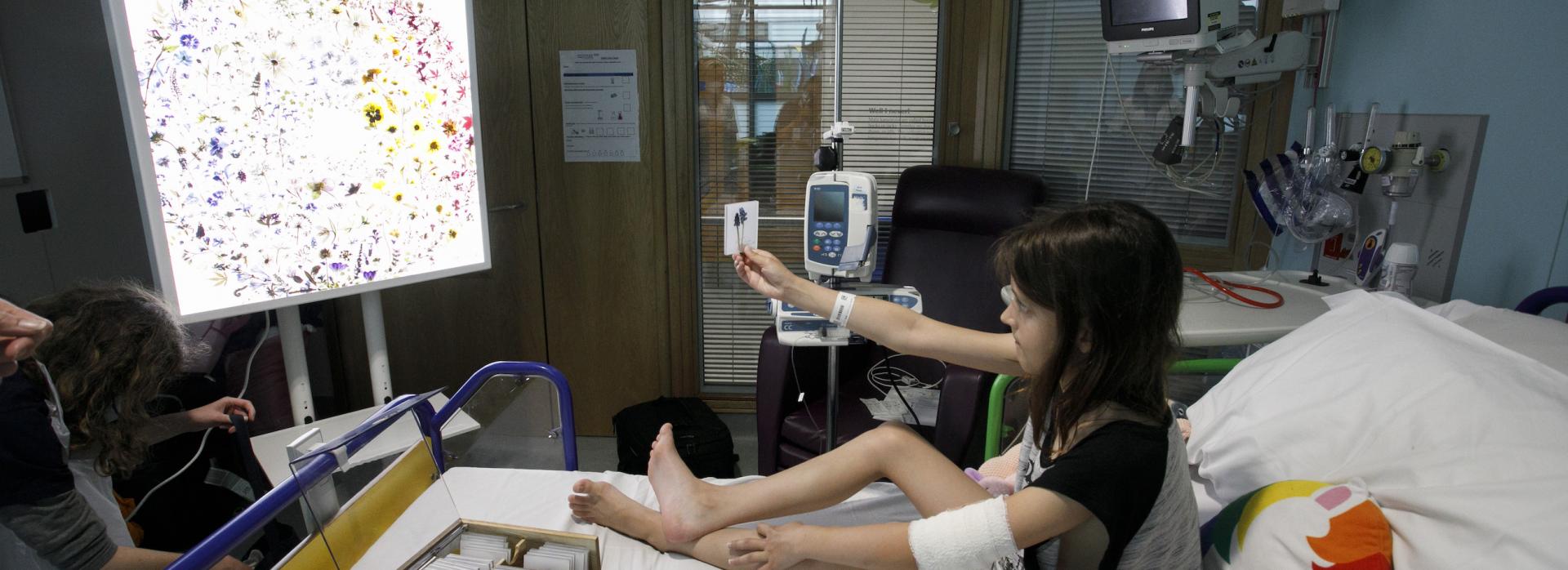GOSH Arts is the arts programme at Great Ormond Street Hospital.
Our participatory programme, art commissions and temporary exhibitions inspire creativity, create welcoming environments, and offer meaningful cultural opportunities across a variety of art forms for patients, families and staff. Our work plays an essential role in enhancing the hospital experience at GOSH. Engaging with visiting artists and having art integrated into our buildings helps to create more relaxed spaces, less clinical environments and contributes to reducing stress and anxiety for our visitors and staff.
The following case study is based on a 2021 conversation with Susie Hall, Co-Head of GOSH Arts.
“It’s totally embedded, because it’s what our patients want”
Since 2019, GOSH Arts’ artistic programming has been connected with the natural world . Its procurement processes are guided by sustainable principles, from materials to the way that work is commissioned, from artists and organisations who have similar values that put the environment at the centre of their work. The GOSH Arts programme is about improving the hospital environment and the experience of hospital for patients, families and staff. Through the pandemic, GOSH Arts has focused increasingly on staff support. “Staff behaviours in terms of wellbeing and the environment also really important.”
GOSH Arts is able to co-create projects “that draw people in, that give them an opportunity to tell their story, to think about the future”. By working with artists who put the environment at the centre of their practice, this process leads to more in-depth conversations.
One conceptual project working with artists Something and Son involves imagining a rewilding of the hospital – imagining this very sterile space, in a very built-up area of central London, as a wilder, less structured space. The project involves considering which parts of the hospital and processes and ecosystems could be turned into habitats for animals (e.g. bees on the roof, equipment for growing flowers). “Most ideas are not going to be possible in actuality. But it's blue-sky thinking.... opening up those conversations and being able to present it back to the hospital in a way that sparks people's imaginations and also allows them to understand what children young people are passionate about, what ideas they have”.
(Read more in Susie's blog.)

